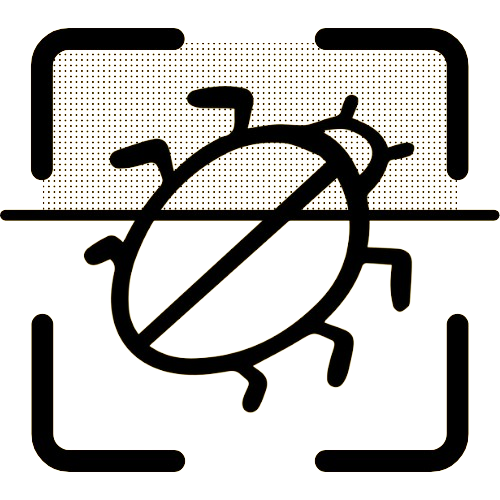Early Detection Strategies: Catching Bedbugs Before Infestation
September 28, 2024
Early Detection Strategies: Catching Bedbugs Before Infestation
Bedbugs can be a persistent nuisance, often becoming a major problem before you've even realized they're there. Identifying the early signs of bed bugs can be crucial to preventing a full-blown infestation. In this article, we’ll explore essential strategies for early bedbug detection, providing you with the knowledge needed to act swiftly and efficiently. It's time to put a stop to bedbug problems before they start!
Why Early Detection Matters
Understanding why early detection is critical is the first step in managing potential bedbug issues. Detecting these pests early not only prevents significant property damage but also saves you from potentially costly extermination bills. By catching bedbugs before they establish a significant presence, homeowners and property managers can:
- Avoid extensive infestations: Early action prevents the spread of bedbugs to adjoining rooms or apartments, curtailing broader infestations.
- Protect health and well-being: Bedbugs can cause skin irritation, allergic reactions, and stress, greatly affecting the quality of life.
- Maintain property integrity: Routine checks can avoid damage to furniture and belongings.
Understanding early signs gives you the upper hand in preventing bedbug infestations.
First Signs to Watch For
Recognizing the first signs of bedbugs is essential for taking prompt action. Key markers include:
- Bite marks on skin: Waking up with small, itchy red bites, often arranged in a line or cluster.
- Blood stains on sheets: Small rust-colored spots are likely from crushed bugs.
- Exoskeletons and shed skins: Look for translucent, brownish shells as they grow.
- Musty odor: Bedbugs produce pheromones that have a characteristic musty smell.
These early indicators should prompt a thorough inspection of your premises. The early signs of bed bugs guide can offer detailed insights.
Common Early Hide-Out Spots
Bedbugs are adept at hiding, which makes their detection challenging. They prefer dark, secluded spaces close to sleeping areas. Key places to inspect include:
- Mattress seams and bed frames: Bedbugs often hide in crevices and under tags.
- Carpets and upholstered furniture: Check underneath and between cushions.
- Electrical outlets and picture frames: Less obvious but still popular hideouts.
- Baseboards and wallpaper edges: Small cracks and loose borders are ideal for nesting.
Creating a checklist of these locations can streamline your inspection process, ensuring thorough examination.
Using Technology for Early Detection
Advancements in technology have made it easier than ever to catch bedbugs early. Tools like bedbug scanner devices and monitoring systems can detect activity before it becomes visible to the naked eye. Implement these technological aids as part of your routine checks:
- Electronic bedbug monitors: These utilize heat and carbon dioxide to lure bedbugs, making their presence known with alerts.
- Bedbug detection apps: Some applications can help identify infestations by analyzing photos of suspected areas.
Incorporating technology can greatly enhance bedbug early detection, minimizing human error in the inspection process.
Creating an Inspection Schedule
Routine inspections are paramount in catching bedbug issues early. Establish a regular schedule to ensure areas are monitored consistently:
- Weekly bed checks: Cover the mattress, bedding, and immediate surroundings.
- Monthly room inspections: Include furniture, carpets, and less frequently used areas.
- Quarterly deep inspections: Extend to basements, attics, and seldom-used furnishings.
Adhering to this schedule can significantly reduce the risk of an infestation taking hold.
Documentation Best Practices
Keeping a detailed record of your inspection findings helps maintain an organized approach to managing potential infestations. Document the following:
- Inspection dates and areas checked
- Signs of bedbugs found or not found
- Preventative measures taken
- Any products used and results seen
Regular documentation not only helps track trends but can also support any future professional treatments if necessary. It ensures that efforts are consistently evaluated and adjusted as needed.
When to Call Professionals
Despite best efforts, there may be times when professional intervention is required. If you notice persistent signs of bedbug activity despite implementing early detection strategies, contacting a pest control professional is advisable. They can provide:
- Advanced treatment options: Professionals have access to heat treatments and chemical applications not available to consumers.
- Expert advice: They can help identify underlying issues contributing to infestations.
- Long-term prevention strategies: Professionals can offer tailored solutions to keep bedbugs at bay.
Professional services should be considered as a complement to your consistent monitoring and preventative practices.
Conclusion
Early detection of bedbugs is not only about maintaining comfort but also about protecting health and property. By becoming vigilant and proactive, you can prevent bedbugs from turning into an infestation nightmare. Utilizing technology, adhering to a regular inspection schedule, and knowing when to seek professional help are all steps in the right direction. Regular scanning is the most effective way to stop these pests in their tracks; visit Bedbug Scanner to explore more tools and tips to maintain a bedbug-free environment.
By arming yourself with the knowledge and tools needed for detection, you can ensure that bedbugs are a pesky problem of the past, keeping your home safe and comfortable for everyone.
